Africa is big. Seriously big. Like, imagine how big Africa is in your head. Wrong. It’s even bigger.
This was a fact that I didn’t entirely grasp when I made the decision to travel overland (i.e. on roads) up the east coast of this huge landmass. Point A was Cape Town, South Africa. Point B was the Danakil Depression, Northern Ethiopia. There was a whole lot of terra firma in between.
Africa is big. Africa is untamed. I was chasing that ‘we’re not in Kansas anymore’ feeling, and Africa seemed like the best place to start. Happily, it did not disappoint. Scenery: spectacular. Wildlife: untamed. People: perfectly friendly. Transport: well here’s the thing…
Outside of major cities, African public transport is either distinctly local or absolutely non-existent. As such, an idiot foreigner might have to get crafty in their quest to get to the next stop on the trail. So for anyone looking to do something similar — and I honestly beg you to because it’s a life changing experience — let’s take a look at what you might face, in the hope that you’ll be the slightest bit better prepared than me.
Modes of African transport
African transport takes many forms. At first glance, some of the following options may not appear to be transport for hire, but you can rest assured that for the right price, they are.
By hire car
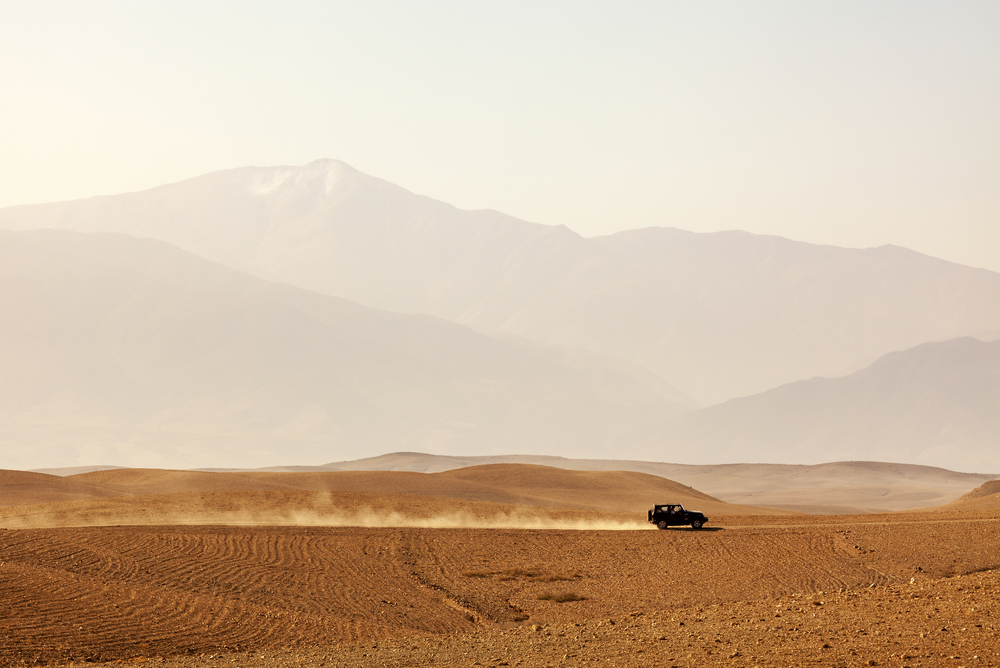
Efficient, comfortable, expensive, boring. Hire cars are available throughout the continent, but if you’re looking for fun and adventure, you won’t find it here. And aren’t you backpacking? Get thrifty for goodness sake.
Try: Europcar, Drive South Africa, or AfriCarHire.
By big bus
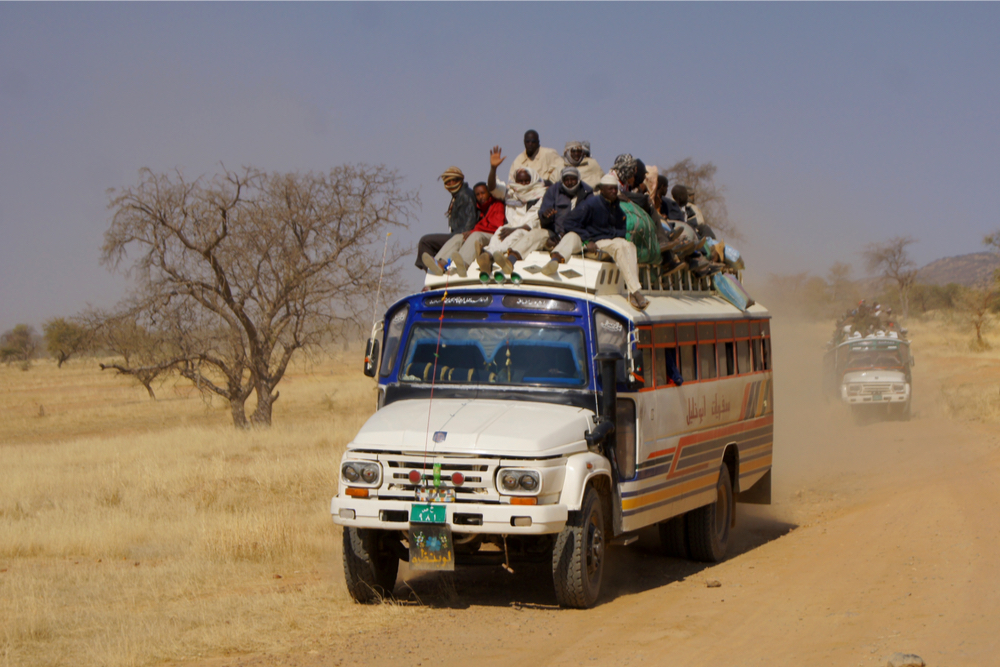
The African equivalent of Greyhound will generally only take you between major cities, and trust me, you don’t go to Africa for the cities. Big buses are far rarer on the more scenic routes that we tourists follow. When you do find one, be prepared for some strange sights, sounds, and smells — my big bus experiences included having a passenger use it to move a house, getting handed a bag of live cats, and witnessing an impromptu cock fight (the bird kind, you rascal).
By minibus
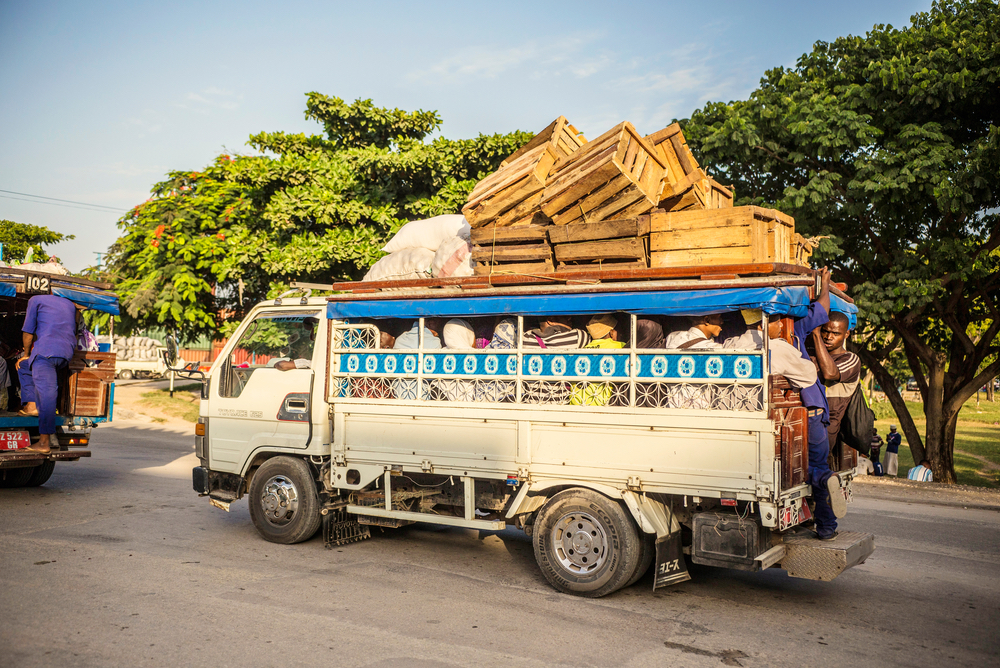
The most common transport, these are work vans converted to seat as many people as possible. I use the word ‘seat’ advisedly here, as a vehicle designed to safely hold 8 or 9 people is happily packed with many more. My record body count was 29 — a school run that saw kids snake over shoulders and onto laps. Unsafe? Certainly. But the huge amount of human flesh sort of works in your favour, as it limits the speed of the vans to a slow jog and will provide plenty of cushion in the event of a slo-mo crash.
Tip: Minibuses are popping up all over the continent at a record rate. Here’s an infographic that outlines minibus cost and efficiency compared with other options (train, bus, etc.).
By train
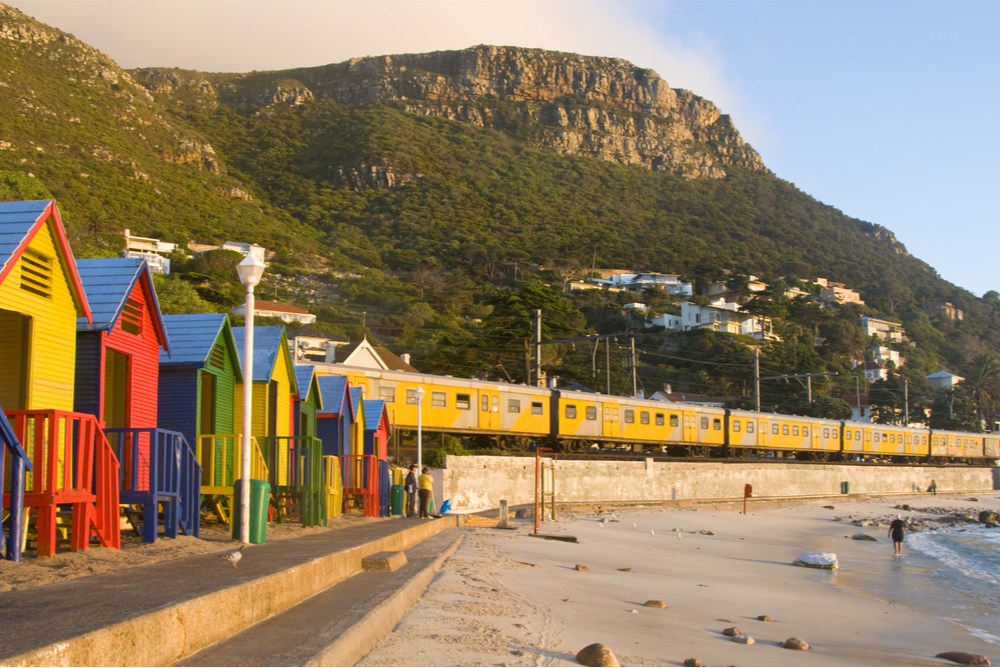
Congratulations! You’ve managed to stumble upon a mode of transport that, comparatively at least, is rather nice. While rare, trains can be a joy, particularly when you purchase a reasonably priced upgrade to first class. I took a first class carriage across Tanzania, and between the butler service, the comfy bed, and the plentiful beers, I can confirm that it is worth every freakin’ penny.
Try: Tazara (Tanzania-Zambia), NRZ (Zimbabwe), Blue Train (South Africa).
By (tray of) truck
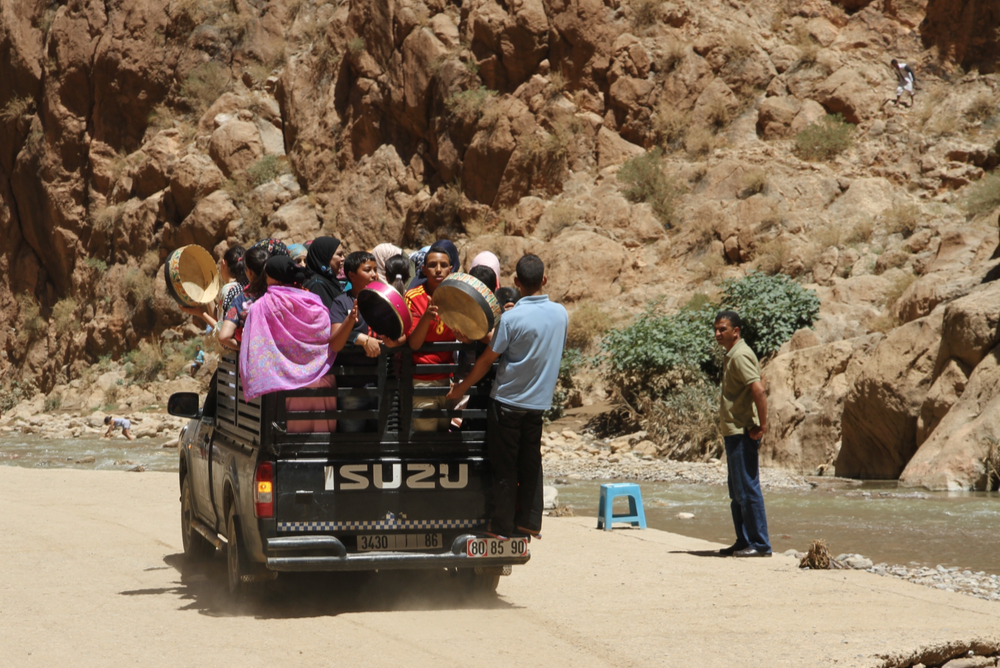
If you think the tray of a truck would be an exciting way to see the African countryside, think again. Like the minibuses, trucks trade comfort for capacity, this time without purpose-built seats. This results in an insecure load of humanity holding on for dear life, which again necessitates speeds nearer tortoise than hare.
By hitchhike
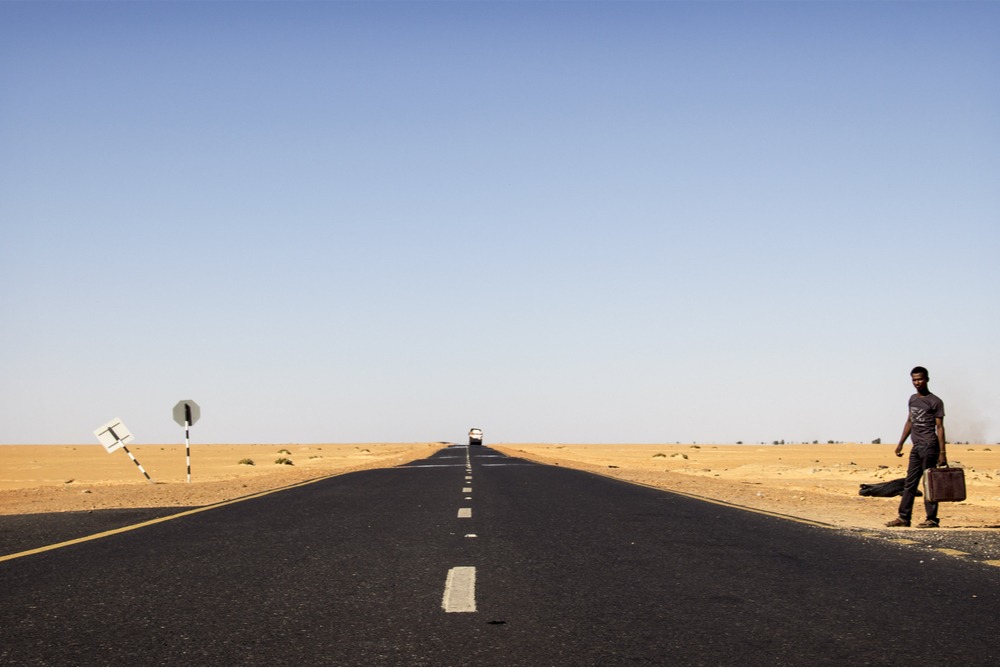
To throw the thumb out on an African backroad is to place the ultimate way to test your gut and save some cash on the road. I’d advise doing so only if you are perfectly at ease with the prospect, but those who do it well will enjoy safe, comfortable, and cheap travel, particularly on major roads. Don’t be shy in waving someone on if you don’t get a good vibe from them, and remember to smile and pay for fuel.
Read: 10 Ways to Travel the World for (Nearly) Free
By motorbike
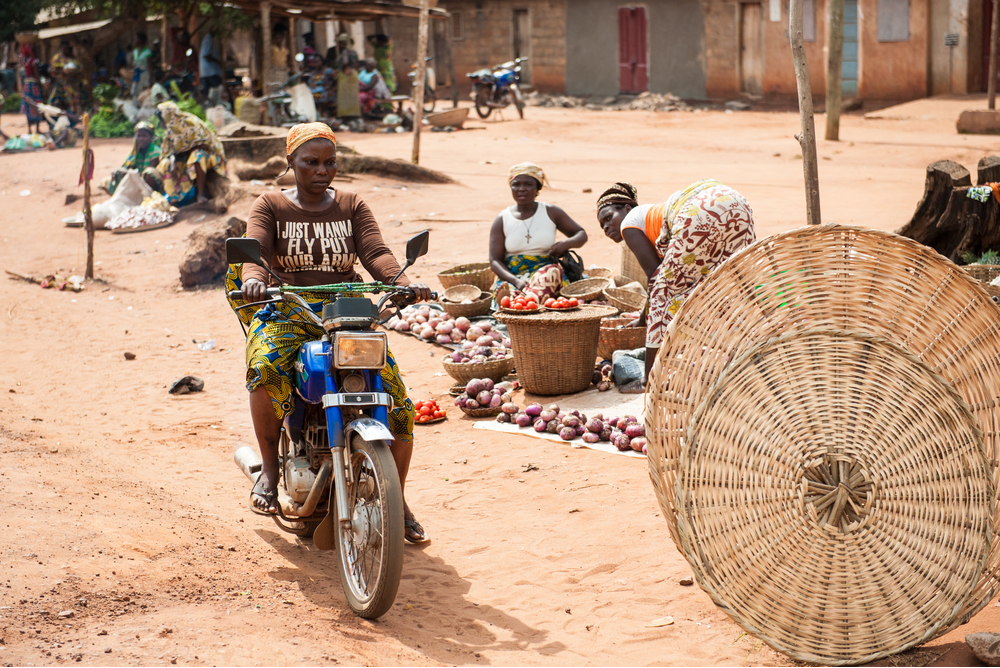
Stuck in the middle of nowhere? Not a bus, truck, train, or car in sight? A motorbike chauffeured by a moonlighting local might be your only hope. If you appropriately line a palm (chauffeurs are expensive, even here) you can get taken anywhere. Just be sure to hold on – judging by the riding, Evel Knievel owns a wildly popular African rider training centre.
My top African overland travel tips:
Still keen to run the gauntlet? Terrific! To celebrate the news, here are my top tips for attacking Africa overland.
Take the first option
There sometimes isn’t a second. At one point on a Mozambique back road, I was offered a spot on an already overloaded truck tray (presumably I was supposed to sit in the lap of an 80 year old man). I declined. I spent the rest of the day waiting for another ride, but it never came. That said, if your gut tells you not to take a ride, don’t take it (see below).
Wear a smile
Where English fails, body language is the universal tongue. A smile can get you a long way, whether hailing a ride, making fast friends on packed transport, and disarming anyone who might otherwise be inclined to snatch your stuff. Rural Africans aren’t used to seeing foreigners taking local transport on their roads, so a smile is usually all it takes to break the ice and let them satisfy their curiosity (usually by touching skin, playing with a camera, or in my case, pulling a beard).
Accept (and pay for) help
With no information or timetables to speak of, hunting down transport or working out the best way to get to your next destination can be, if you’ll excuse my French, a real pain in the arse. Locals will be happy to help, but they’ll understandably expect fair payment for their time and knowledge. Accept their help — it’s way quicker — and tip appropriately. Whatever change you might have will usually do. I generally tipped $1 or less. Sometimes these locals will take their cut from your ticket payment instead. In these cases, you don’t need to tip and should be careful not to be overcharged.
Clarify the payment
Speaking of which, once you’ve found your transport you need to ask your driver/bus driver one thing: how much to get to [destination]? Lock in the price before you even sit down. Usually it will be entirely fair, but if it sounds like too much, simply question their math and they’ll generally bend on the price. You’ll often swap minibuses en route; when this happens, make sure that your original driver passes the appropriate payment onto your next driver: you don’t want to pay for the same trip twice.
Trust your gut
Instinct is an amazing human trait, and one that you should definitelyy use when travelling overland in Africa. If something feels off, it’s because, maybe, just maybe, something is. A hitchhiking opportunity giving you a weird vibe? Wave them on. That minibus a bit too rickety for your liking? It might take a while, but another will come. At one point in South Africa, a minibus tore up the road and slammed on the brakes before opening the door and offering me a ride. I could smell burning, so I waved them on and quietly wished the best to the passengers inside.
Embrace the lunacy
Things are done differently in Africa. If your trip is anything like mine, the following might happen:
- A stranger hands you a baby at the start of the trip and takes it back at the end.
- You get soaked in chicken juice after a pallet of frozen birds is placed atop your minibus.
- You’re driven 100 km in the wrong direction because ‘up’ the coast apparently means south.
- You need to hold a bag out the window because there’s no room inside the van.
But if your feelings about your trip are anything like mine, you’ll look back on your baby-holding, chicken-juice soaked, definitely-going-the-wrong-way self and think god that was cool. It’s big. It’s untamed. And it’s definitely not Kansas. It’s Africa overland.